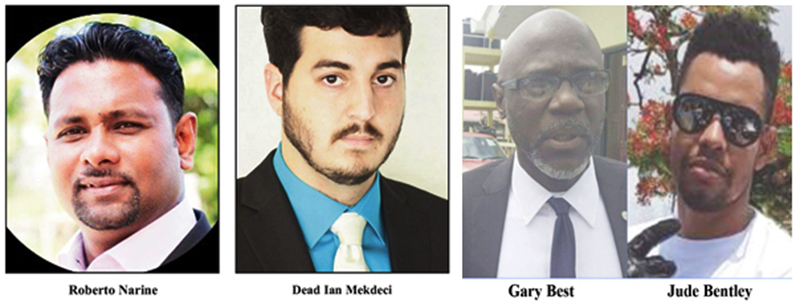As he had done before in dismissing a case against former Guyana Defence Force Chief of Staff, Gary Best, who had been charged with driving under the Influence (DUI) in relation to the death of cyclist Jude Bentley, Magistrate Clive Nurse has thrown out another case of DUI, even though a breathalyser seemingly recorded a reading above the legal limit.
The ultimate reason—at the very basic level—lack of proof that the instrument was even properly functioning.
Like other Magistrates have also done in similar cases, the reason often cited by the Court for such dismissals, is the lack of sufficient evidence from the prosecution: 1) that the instrument used to carry out the breathalyzer test was properly calibrated and approved, and 2); that the officer conducting the analysis of the test is authorised to so do.
These repeated failings raise questions which must be answered by the authorities as to what legal measures need to be implemented to address these shortcomings; especially where a reading over the legal limit is recorded but is still tossed aside by the court.
In these circumstances, defence lawyers are swift to submit to the Court that their clients have no case to answer and that the charge should be dismissed as the prosecution would have failed to prove the constituent elements of the offence.
On Wednesday, Magistrate Nurse dismissed the DUI charge which had been brought against Roberto Narine in the accident that led to the death of Ian Mekdeci on May 1st, of last year. The causing-death charge is still pending against him.
According to a release from Narine’s attorney Siand Dhurjon, his client was charged with driving with a breath alcohol level exceeding the limit contrary to Section 39A of the Motor Vehicles and Road Traffic Act.
Dhurjon said the police had alleged that Narine’s breath alcohol content was excessively over the limit after being breathalyzed twice.
The lawyer said that the prosecution led video-evidence of his client being breathalyzed and even of the instrument showing a reading over the limit. He, however, challenged that evidence, arguing that there was no evidence that the specific breathalyzer instrument was approved for such use as is required by the Act.
Furthermore, he argued that there was no certificate adduced by the prosecution to prove that the police officer who conducted the breathalyzer analysis was authorised to do such breath tests.
Dhurjon’s case was that “an unauthorized officer conducted a flawed breathlyzer procedure” on his client, using a device “unapproved for the purpose.”
According to the release, Magistrate Nurse went on to rule that “the prosecution itself had introduced into evidence information to show that the breathalyzer device was not in proper working condition as the witnesses admitted” under cross-examination that the device was incapable of printing the result receipts.
Dhurjon said that under cross-examination the officer who administered the test, admitted that he was trained to print and use the receipts; but also, further admitted that the court had been “deprived of certain facts because the machine could not print receipts.”
The lawyer said prosecution witnesses accepted under cross-examination that, contrary to the requirements of the Act, no statement or certificate was delivered to the defendant specifying the date and time of the breath test and his breath analysis results expressed in microgrammes of alcohol per each 100ml of breath.
Dhurjon said the Magistrate noted that there was an absence of any evidence of the machine being “recently calibrated, self-checked or purged,” ruling that given all the shortcomings of the evidence led by the prosecution, the breathalyzer results were rendered “insufficiently reliable.”
The Court agreed with counsel, upheld his submissions and dismissed the DUI charge against his client.
Dhurjon said in the release that Magistrate Nurse remarked that the prosecution “failed to prove the statutory requirements and the elements of their case,” while adding that Narine did not have to answer the charge.
Best had been freed of his causing-death charge and subsequently the DUI charge.
Background
The police’s case against Narine is that he was under the influence when he allegedly caused the death of 27-year-old Mekdeci due to dangerous driving.
The charge had stated that on May 1st, 2022, at Vlissengen Road and Sandy Babb Street, Narine drove motor jeep PTT 4136 in a manner dangerous to the public, thereby causing the death.
The court had heard that on the day in question at about 02:15 hrs, Narine was proceeding south along the western driving lane of Vlissengen Road, and on approaching Sandy Babb Street, while the traffic light was showing red in his direction, he failed to stop.
As a result, he collided with the left side of PXX 4592 in which Mekdeci was a passenger, which was pushed some distance to the north-west end of the intersection of the streets.
Dhurjon’s contention has been that his client “was not driving dangerously at the time of the accident.”






